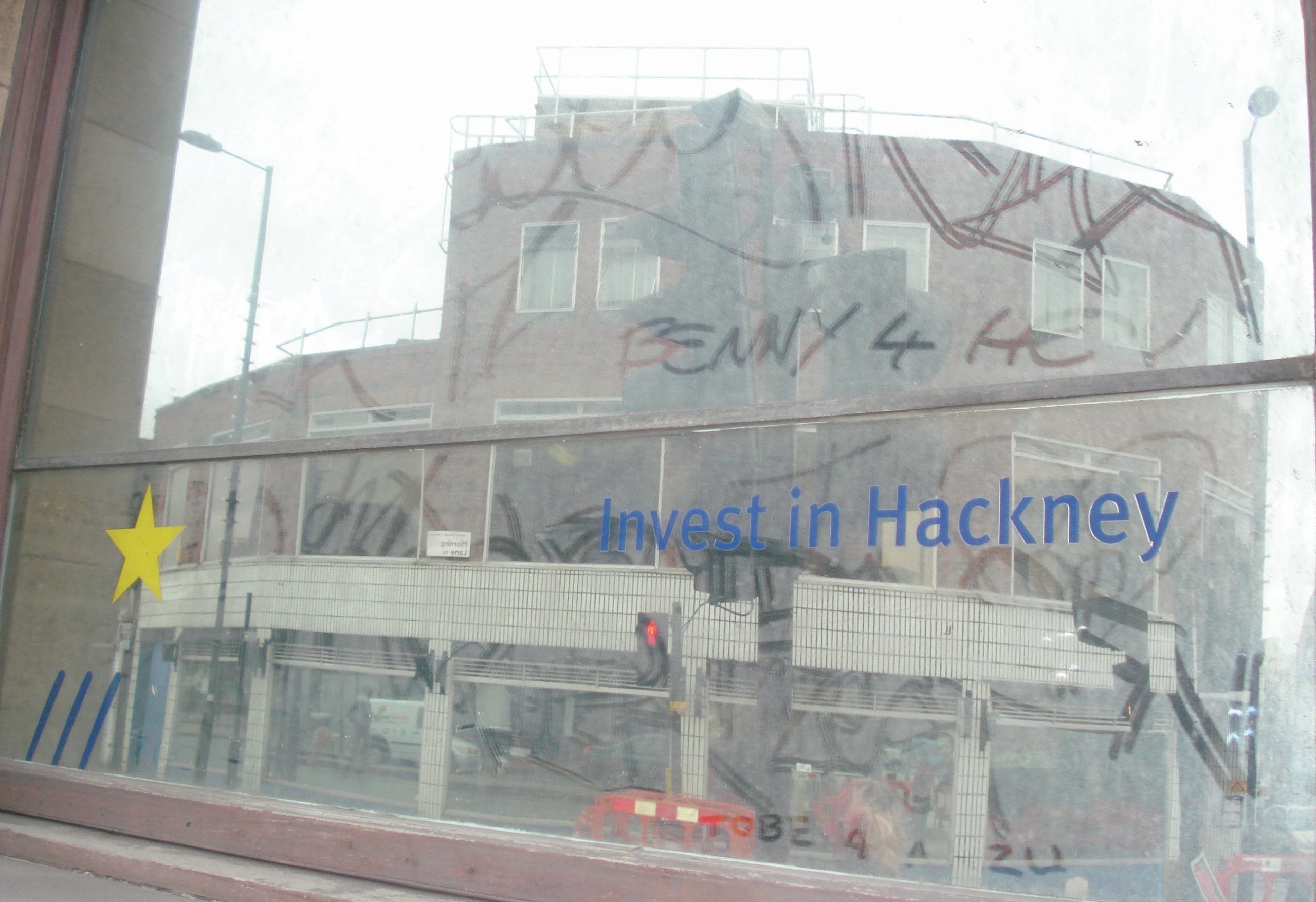
The photograph below captures some conflicting experiences of changes that have been taking place in Hackney, a borough in inner London. It suggests an area that is being promoted to investors, with some success, but which is also gathering dust and graffiti. This raises questions about how changing places are experienced by the different groups of people who live in and pass through them, and about how these experiences can be documented in words and images. Taking these questions as a point of departure, this article explores how the things we see can be used to investigate the processes and meanings that define a place, in this case Hackney.
Hackney borders London’s financial district (the City of London) and its digital industries quarter (Silicon Roundabout). It is also home to many artists and writers, new immigrants and established white workingclass communities. It has been characterised as a place of ‘super diversity’ (where multiple groups live alongside each other) and dramatic ‘churn’ (in which there is constant change in the make-up of neighbourhoods and some residents remain for short periods before moving on). These socioeconomic and demographic characteristics and changes play an important part in defining Hackney as a place.
Your organisation does not have access to this article.
Sign up today to give your students the edge they need to achieve their best grades with subject expertise
Subscribe




